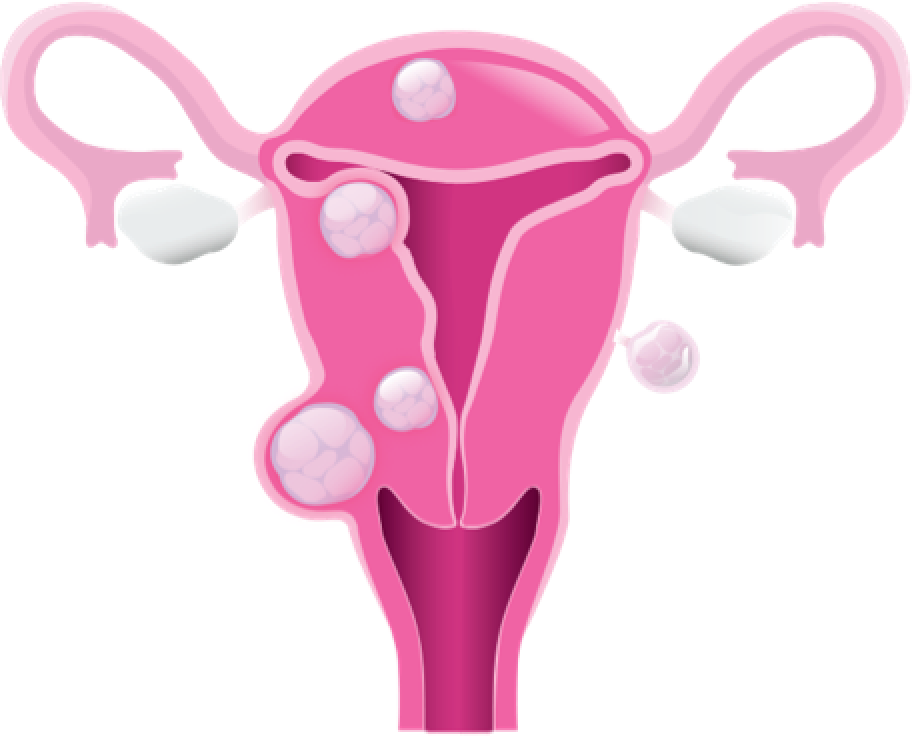IMPORTANT SAFETY INFORMATION
What is the most important information I should know about ORIAHNN?
ORIAHNN may cause serious side effects, including:
- Cardiovascular Conditions
- ORIAHNN may increase your chances of heart attack, stroke, or blood clots, especially if you are over 35 years of age and smoke, have uncontrolled high blood pressure, high cholesterol, diabetes, or are obese. Stop taking ORIAHNN and call your healthcare provider right away or go to the nearest hospital emergency room right away if you have:
- Leg pain or swelling that will not go away
- Sudden shortness of breath
- Double vision, bulging of the eyes, or sudden blindness (partial or complete)
- Pain or pressure in your chest, arm, or jaw
- Sudden, severe headache unlike your usual headaches
- Weakness or numbness in an arm or leg, or trouble speaking
- Bone Loss (Decreased Bone Mineral Density [BMD])
- While taking ORIAHNN, your estrogen levels may be low. Low estrogen levels can lead to BMD loss.
- If you have bone loss on ORIAHNN, your BMD may improve after you stop taking ORIAHNN, but complete recovery may not occur. It is unknown if these BMD changes could increase your risk for broken bones as you age. For this reason, you should not take ORIAHNN for more than 24 months.
- Your healthcare provider may order an X-ray test called a DXA scan to check your bone mineral density when you start taking ORIAHNN and periodically after you start.
- Your doctor may advise you to take vitamin D and calcium supplements as part of a healthy lifestyle.
- Effects on Pregnancy
- Do not take ORIAHNN if you are pregnant or trying to become pregnant, as it may increase the risk of early pregnancy loss.
- If you think you may be pregnant, stop taking ORIAHNN right away and call your HCP.
- ORIAHNN can decrease your menstrual bleeding or result in no menstrual bleeding at all, making it hard to know if you are pregnant. Watch for other pregnancy signs like breast tenderness, weight gain, and nausea.
- ORIAHNN does not prevent pregnancy. You will need to use effective methods of birth control while taking ORIAHNN and for 28 days after you stop taking ORIAHNN. Examples of effective methods can include condoms or spermicide, which do not contain hormones.
- Talk to your HCP about which birth control to use during treatment with ORIAHNN. Your HCP may change the birth control you are on before you start taking ORIAHNN.
Do not take ORIAHNN if you:
- Have or have had:
- A stroke or heart attack
- A problem that makes your blood clot more than normal
- Blood circulation disorder
- Certain heart valve problems or heart rhythm abnormalities that can cause blood clots to form in the heart
- Blood clots in your legs (deep vein thrombosis), lungs (pulmonary embolism), or eyes (retinal thrombosis)
- High blood pressure not well controlled by medicine
- Diabetes with kidney, eye, nerve, or blood vessel damage
- Certain kinds of headaches with numbness, weakness, or changes in vision, or have migraine headaches with aura if you are over age 35
- Breast cancer or any cancer that is sensitive to female hormones
- Osteoporosis
- Unexplained vaginal bleeding that has not been diagnosed
- Liver problems including liver disease
- Smoke and are over 35 years old
- Are taking medicines known as strong OATP1B1 inhibitors that are known or expected to significantly increase the blood levels of elagolix. Ask your HCP if you are not sure if you are taking this type of medicine.
- Have had a serious allergic reaction to elagolix, estradiol, norethindrone acetate, or any of the ingredients in ORIAHNN. Ask your HCP if you are not sure.
- FD&C Yellow No.5 (tartrazine) is an ingredient in ORIAHNN, which may cause an allergic type reaction such as bronchial asthma in some patients who are also allergic to aspirin.
What should I discuss with my HCP before taking ORIAHNN?
Tell your HCP about all your medical conditions, including if you:
- Have or have had:
- Broken bones or other conditions that may cause bone problems
- Depression, mood swings, or suicidal thoughts or behavior
- Yellowing of the skin or eyes (jaundice) or jaundice caused by pregnancy (cholestasis of pregnancy)
- Are scheduled for surgery. ORIAHNN may increase your risk of blood clots after surgery. Your doctor may advise you to stop taking ORIAHNN before you have surgery. If this happens, talk to your HCP about when to restart ORIAHNN after surgery.
- Are pregnant or think you may be pregnant.
- Are breastfeeding. It is not known if ORIAHNN can pass into your breastmilk. Talk to your HCP about the best way to feed your baby if you take ORIAHNN.
Tell your HCP about all the medicines you take, including prescription and over-the-counter medicines, vitamins, and herbal supplements.
Women on thyroid or cortisol replacement therapy may need increased doses of the hormone.
Keep a list of your medicines with you to show to your HCP and pharmacist when you get a new medicine.
What should I avoid while taking ORIAHNN?
- Avoid grapefruit and grapefruit juice during treatment with ORIAHNN since they may affect the level of ORIAHNN in your blood, which may increase side effects.
What are the possible side effects of ORIAHNN?
ORIAHNN can cause additional serious side effects, including:
- Suicidal thoughts, suicidal behavior, and worsening of mood. ORIAHNN may cause suicidal thoughts or actions. Call your HCP or get emergency medical help right away if you have any of these symptoms, especially if they are new, worse, or bother you: thoughts about suicide or dying, attempts to commit suicide, new or worse depression or anxiety, or other unusual changes in behavior or mood. Pay attention to any changes, especially sudden changes, in your mood, behaviors, thoughts, or feelings.
- Abnormal liver tests. Call your HCP right away if you have any of these signs and symptoms of liver problems: jaundice, dark amber-colored urine, feeling tired, nausea and vomiting, generalized swelling, right upper stomach area pain, or bruising easily.
- High blood pressure. You should see your HCP to check your blood pressure regularly.
- Gallbladder problems (cholestasis), especially if you had cholestasis of pregnancy.
- Increases in blood sugar, cholesterol, and fat (triglyceride) levels.
- Hair loss (alopecia). Hair loss and hair thinning can happen while taking ORIAHNN, and it can continue even after you stop taking ORIAHNN. It is not known if this hair loss or hair thinning is reversible. Talk to your HCP if this is a concern for you.
- Changes in laboratory tests, including thyroid and other hormone, cholesterol, and blood clotting tests.
The most common side effects of ORIAHNN include: hot flashes, headache, fatigue, and irregular periods.
These are not all of the possible side effects of ORIAHNN. Tell your HCP if you have any side effect that bothers you or that does not go away. Call your HCP for medical advice about side effects.
Take ORIAHNN exactly as your HCP tells you. The recommended oral dosage of ORIAHNN is one yellow/white capsule in the morning and one blue/white capsule in the evening, with or without food.
This is the most important information to know about ORIAHNN. For more information, talk to your doctor or HCP.
You are encouraged to report negative side effects of prescription drugs to the FDA. Visit www.fda.gov/medwatch or call 1-800-FDA-1088.
If you are having difficulty paying for your medicine, AbbVie may be able to help. Visit AbbVie.com/myAbbVieAssist to learn more.
US-ORIA-210459



